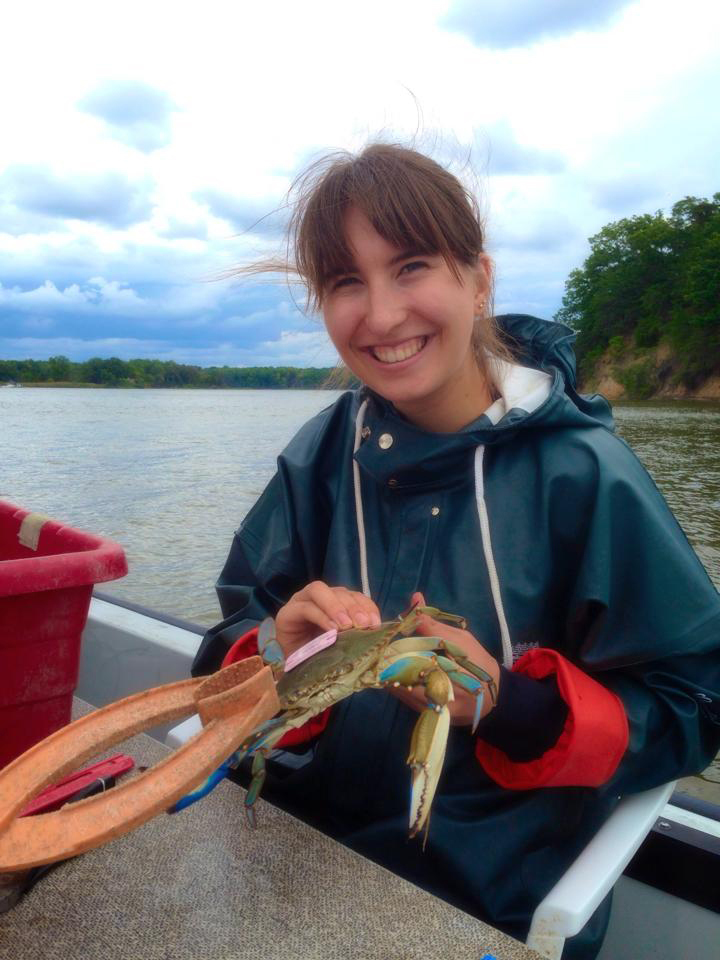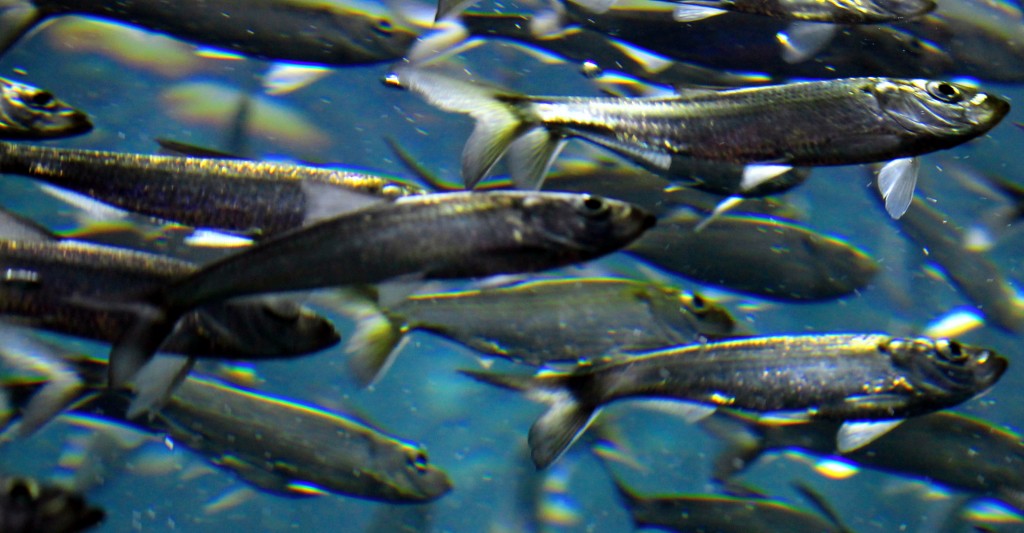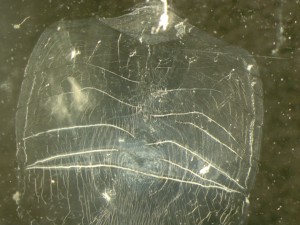by Kristen Minogue
It’s no secret that River Herring are in trouble. There was a time, back in the 1950s, when Maryland fishermen regularly pulled in 4 million pounds or more a year of the silver fish. Then something mysterious happened. Herring harvests generally fluctuate from year to year. But in the 1970s, they fell and never came back up. For the last four decades, commercial fishermen in Maryland have been lucky to catch a few hundred thousand a year. Now they catch none.
In an attempt to rebuild the population, the Maryland Department of Natural Resources (DNR) closed off the fishery at the end of 2011 with a state-wide moratorium, joining most other states on the Eastern Seaboard. They had good reason to want to save them. River Herring provide food for a number of larger fish, including the popular Striped Bass, as well as sea birds and mammals.
“If the population of River Herring changes, then this can affect the whole marine ecosystem,” says Eva Kinnebrew-González. Kinnebrew is an intern at the Smithsonian Environmental Research Center who spent the fall studying River Herring with the center’s Fish and Invertebrate Ecology Lab.
River Herring are small, silvery fish about 10 inches long. The East Coast has two species: the Blueback Herring and the Alewife. They’re difficult to tell apart, but Alewives are slightly larger and stouter, with bigger eyes. Bluebacks also have, in fitting with their name, a bluish-green back compared to the Alewives’ bronze.
The lab have been searching for the herring in several Maryland rivers, looking for signs of a comeback. They sample with nets and multibeam sonar, essentially a high-tech fish finder, one of the only ways to see beneath the murky waters. But Kinnebrew had another number in mind when she began combing through the data: age. In the two decades leading up to the moratorium, Maryland DNR data revealed that the population had started getting younger. From a purely biological standpoint, this didn’t bode well for their future.

Intern Eva Kinnebrew searched for River Herring, Blue Crabs and other underwater life with SERC’s fish & invertebrate lab. (Dejeanne Doublet/SERC)
“Older and larger females tend to produce more eggs,” Kinnebrew explains. If River Herring populations were losing older adults, it meant they were losing some of their best breeders at a time when the population was already in peril.
Since 1989 the average age in Maryland DNR surveys dropped from 5.5 years to just over four. A year and a half may seem trifling on a human scale, but for River Herring, it’s an entire spawning season. Of the 65,000-100,000 eggs they produce each year, only 1 percent typically survive to adulthood. With numbers like that, every year counts.
There’s also the fact that River Herring don’t begin spawning until the age of three or four. If the average age is four, many of the fish may have only a single year to spawn. “If that year happens to be poor, that can be really detrimental,” Kinnebrew said. Having a wider age range boosts the resilience of the population.
But the lab also uncovered a few glimmers of hope. River Herring leave marks on their scales whenever they spawn. Ecologists can read these marks like tree rings and detect how many times a fish has released eggs. Kinnebrew’s preliminary findings suggest more than half the fish SERC scientists caught were repeat spawners—a figure twice as high as found in other states.
It isn’t clear why so many of the fish seem to be spawning more than once in the Chesapeake compared to other places, says Matt Ogburn, a SERC research scientist with the lab. The jury is also still out on what caused the most recent drops in River Herring in the first place, though he says some are inadvertently mixed in with catches of Atlantic Herring.
“Starting in the mid-nineties is really when the Atlantic Herring fishery off the northeast has really taken off,” he said. “So there’s been a lot of concern that the bycatch of River Herring in that fishery is impacting populations. This might be an example of that. It could be due to something else.” A few other possibilities include the rise in Striped Bass on the East Coast, which prey on River Herring, or changes in food availability when River Herring leave freshwater streams for the ocean.
In the meantime, the Fish and Invertebrate Ecology Lab will continue keeping tabs on River Herring populations. They are watching for more heralds of a possible recovery. Though it may take years or decades, if they have luck, they may one day find a sign that Maryland can finally lift the moratorium and open a sustainable fishery.
Alewife photo by Geoffrey Gilmour-Taylor used under the Creative Commons license here.




